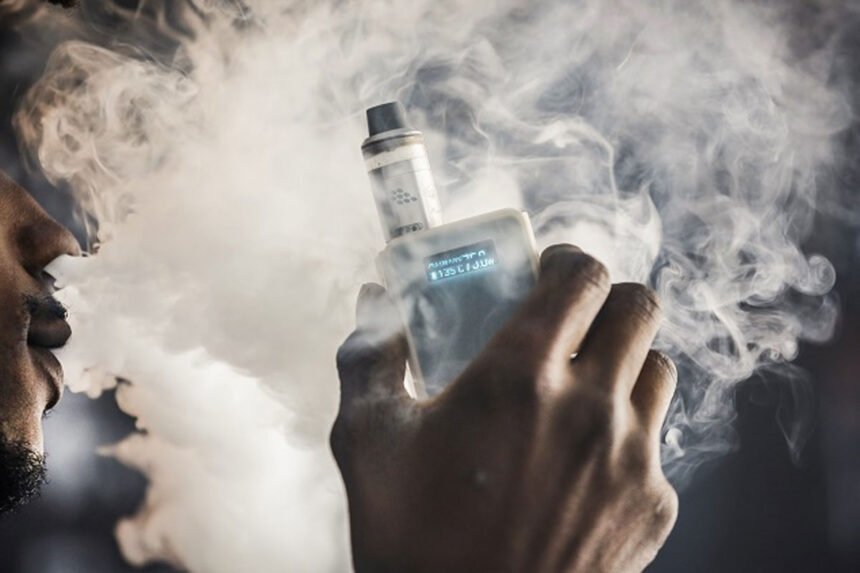Temperature control (TC) vaping has revolutionized the vaping experience, offering a solution to problems such as dry and burnt hits, inconsistent vapor production, and inefficient battery usage. This guide delves into the intricacies of temperature control vaping, its mechanics, benefits, and best practices for achieving an optimal vaping experience.
What is Temperature Control Vaping?
Temperature control (TC) in vape mods is a technological solution designed to prevent dry and burnt hits while ensuring a consistent vaping experience. Unlike traditional vaping, where the coil temperature can rise uncontrollably, TC vaping allows users to set a maximum temperature limit, typically ranging from 300°F to 600°F (100°C to 315°C). The mod then adjusts the power sent to the coil to maintain this selected temperature.
Historical Context
The concept of temperature control vaping was introduced by Evolv in 2014 with the invention of the DNA chip. This innovation marked a significant leap in vaping technology, providing vapers with a more controlled and customizable experience. Today, temperature control is a standard feature in most advanced vape mods.
How Does Temperature Control Work?
The Basics of Resistance
To understand TC vaping, it’s essential to grasp the concept of resistance. In every vape coil, there’s a resistance value that changes with temperature. When using traditional wires like Kanthal, this resistance remains static regardless of temperature. However, TC vaping requires wires that exhibit a predictable increase in resistance as they heat up.
The Process
- Initial Resistance Measurement: The mod measures the coil’s resistance at room temperature.
- Continuous Monitoring: As you vape, the mod continuously monitors the resistance.
- Temperature Calculation: The mod converts resistance changes into temperature increases.
- Power Adjustment: The mod adjusts the power to maintain the selected temperature, akin to a car’s cruise control maintaining a consistent speed.
Wire Types for TC Vaping
Not all wires are suitable for TC vaping. The most common materials include:
- Nickel (Ni200): Highly responsive but requires careful handling due to potential nickel allergies.
- Titanium (Ti): Offers a good balance between responsiveness and safety.
- Stainless Steel (SS): The most versatile option, usable in both TC and wattage modes.
How to Vape in TC Mode
Setting Up
- Select TC Mode: Switch your mod to TC mode and choose the wire type for your coil.
- Room Temperature Calibration: Ensure the mod and tank are at room temperature for accurate readings.
- Install the Coil: Screw the coil tightly and ensure all connections are secure.
- Lock Resistance: If your mod allows, lock the resistance to prevent fluctuations.
Adjusting Settings
- Temperature: Start at a lower temperature and gradually increase until you find your preferred setting. Common ranges are between 390°F to 480°F (200°C to 250°C).
- Wattage: Some mods allow wattage adjustments in TC mode to control ramp-up time. Begin with the lowest recommended wattage and adjust as needed.
Best Practices
- Avoid Dry Burns: Stainless steel coils can be dry-burned at low wattages, but it’s generally recommended to skip this step to avoid hot spots.
- Monitor Juice Levels: TC vaping reduces dry hits, but it’s still crucial to keep an eye on your e-juice levels.
The Pros of Temperature Control Vaping
Preventing Dry and Burnt Hits
One of the primary advantages of TC vaping is the elimination of dry and burnt hits. When the wick runs dry, the coil’s temperature rises, triggering the mod to cut power and prevent a harsh hit. This ensures a smoother and more enjoyable vaping experience.
Extending Coil and Wick Life
By preventing overheating, TC vaping extends the lifespan of both coils and wicks. The coils do not exceed the temperature necessary for vaporization, reducing wear and tear and maintaining flavor quality over time.
Enhancing Battery Life
TC vapes use power more efficiently, as the mod only provides the necessary wattage to maintain the set temperature. This can result in up to 1.5 times longer battery life compared to variable wattage vaping.
Consistent Vaping Experience
Temperature control ensures that each puff is consistent in terms of flavor and vapor production. In contrast, traditional wattage mode can lead to varying heat levels and inconsistent hits, particularly during longer drags.
Potential Drawbacks and Counterarguments
Learning Curve
TC vaping can be daunting for beginners due to the additional settings and adjustments required. However, with practice and understanding, the benefits far outweigh the initial complexity.
Compatibility Issues
Not all mods and coils are compatible with TC mode. Vapers must ensure they have TC-compatible devices and wires, which might involve additional costs.
Limited Coil Options
While materials like stainless steel offer versatility, other TC-compatible wires like nickel and titanium have limited availability and might not be suitable for everyone due to potential allergies.
Conclusion
Temperature control vaping represents a significant advancement in the vaping industry, offering a safer, more consistent, and customizable experience. By understanding the mechanics and benefits of TC vaping, users can enhance their vaping sessions and enjoy a more satisfying and efficient way of consuming e-juice.
As with any technology, there is a learning curve, but the long-term advantages make TC vaping an appealing choice for both novice and experienced vapers alike. Whether you’re looking to avoid dry hits, extend coil life, or simply achieve a more consistent vape, temperature control vaping is worth exploring.
